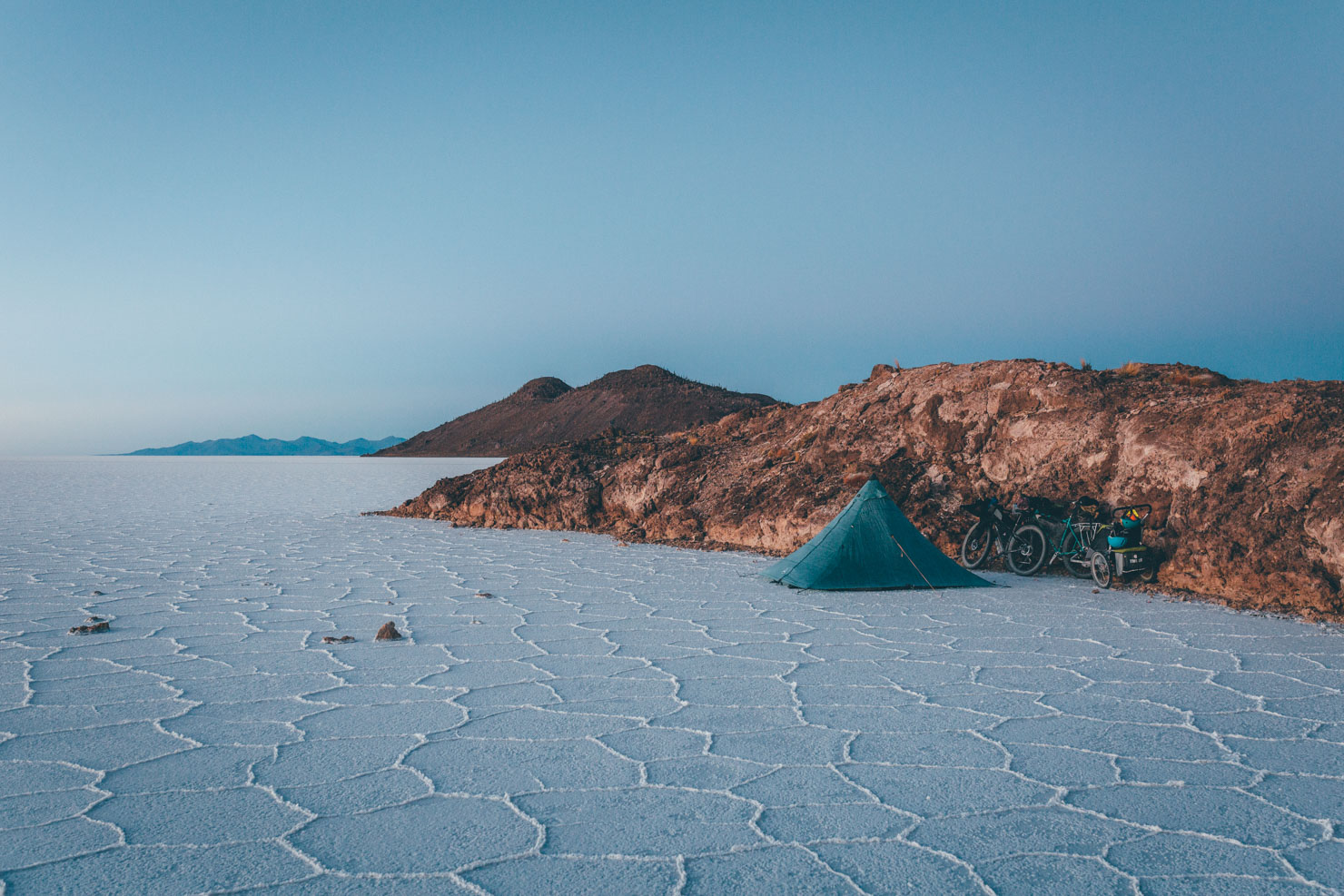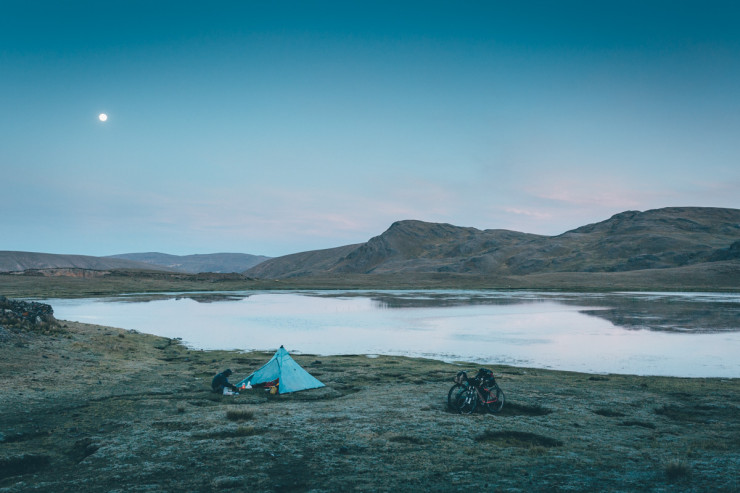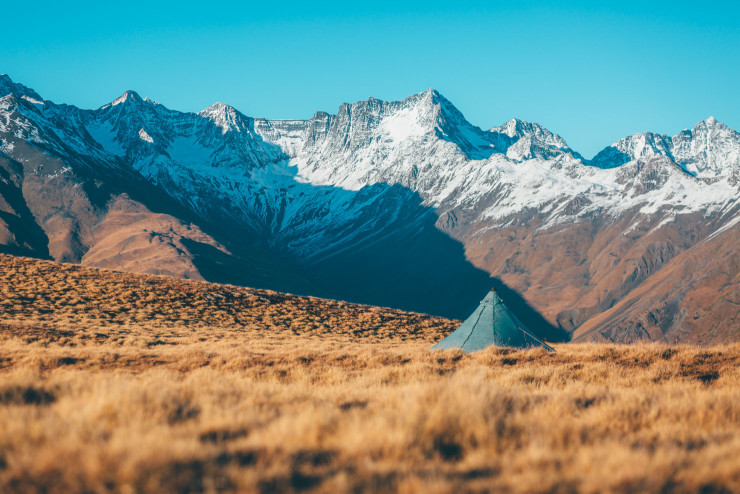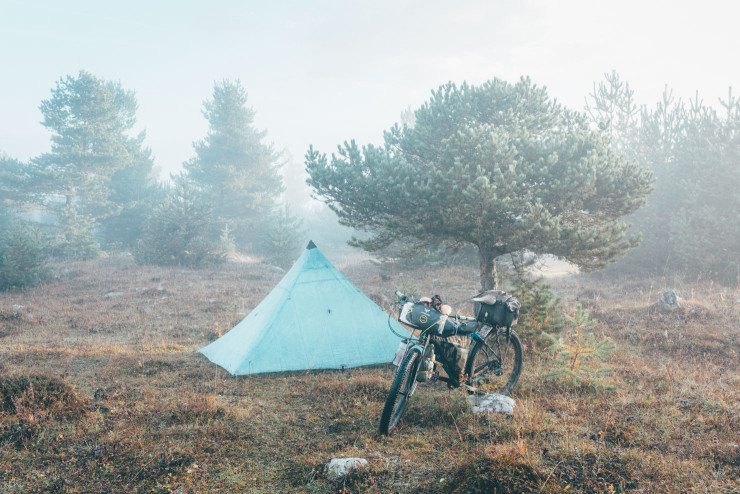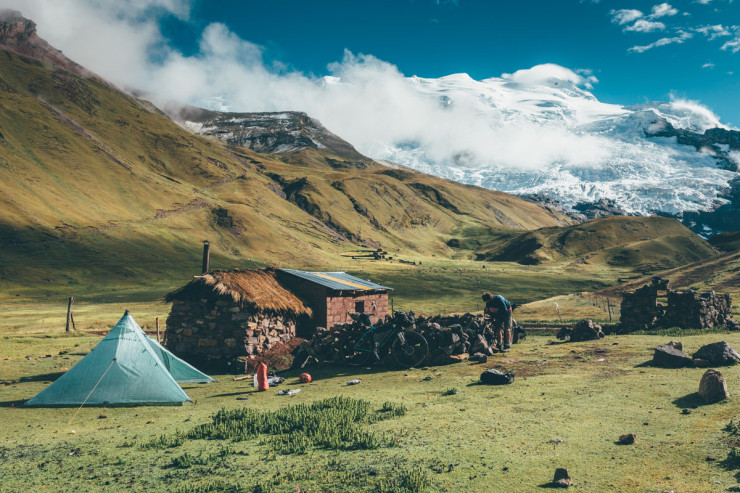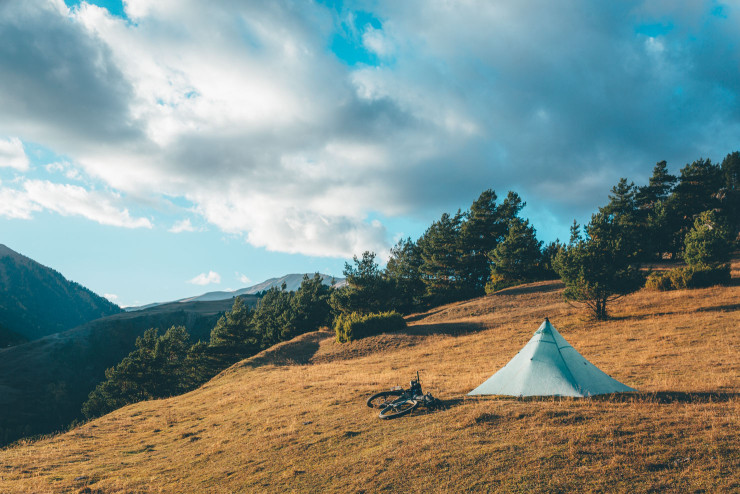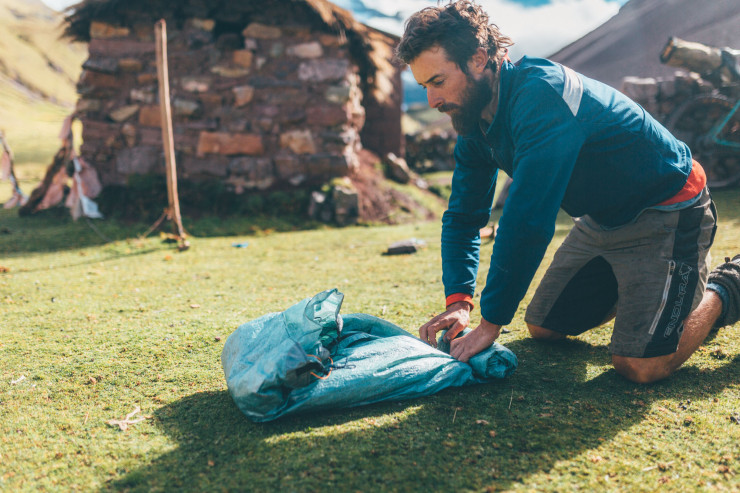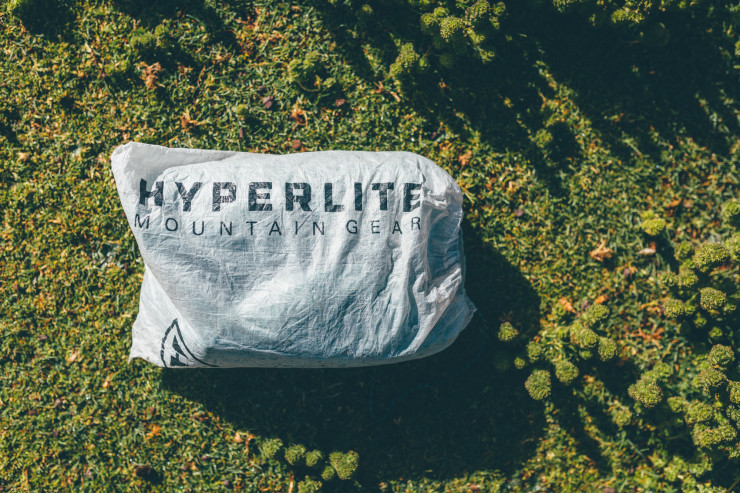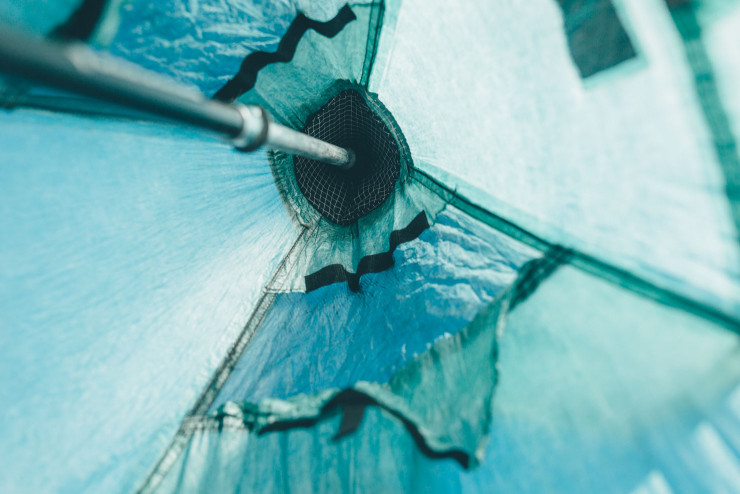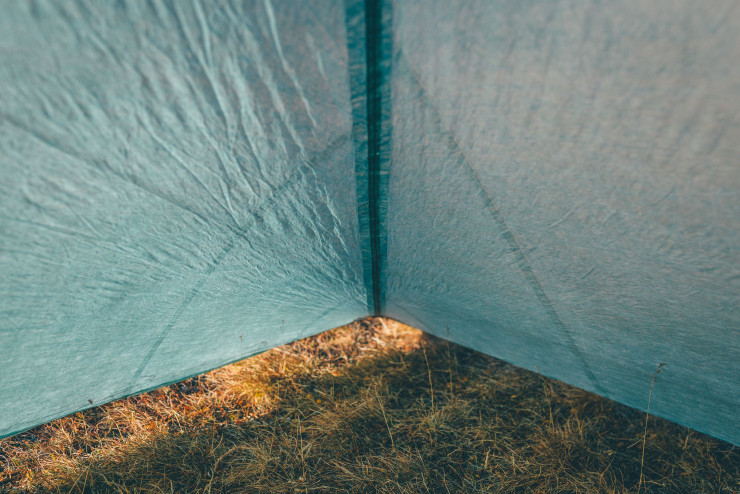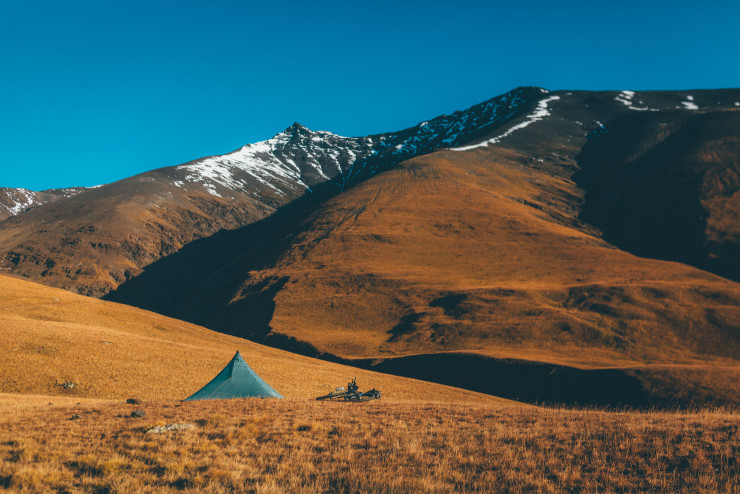Hyperlite UltaMid 2 Review: Andes to Caucasus
The Hyperlite Mountain Gear Ultamid 2 is a minimal, pyramid-style shelter, constructed in the US from top grade cuben fiber and rated for four season mountain use. But given its eyebrow-raisingly high price tag, is it really worth the investment? After using it for several months, bikepacking across both the Bolivian Andes and the Georgian Caucasus, here’s why we think it is…
It’s no secret that I really like this shelter. After all, the Hyperlite Mountain Gear UltaMid 2 earned itself a place in our recent Gear of the Year 2016 Awards.
I’ve had plenty of time to discover why, given that the time we’ve spent together throughout the year. I’ve used it on a broad spectrum of trips, from local overnighters in northern New Mexico to the multi-week Ruta de Las Tres Cordilleras in Bolivia and Peru. The UltaMid’s been pitted against the sodden elements during prolonged and heavy rain in Georgia’s Caucasus mountains. I’ve even taken it on a family bikepack across the parched dry expanse of the Salar de Uyuni, infamous for flaying the finest tents and clogging their zippers with fine sand and dust.
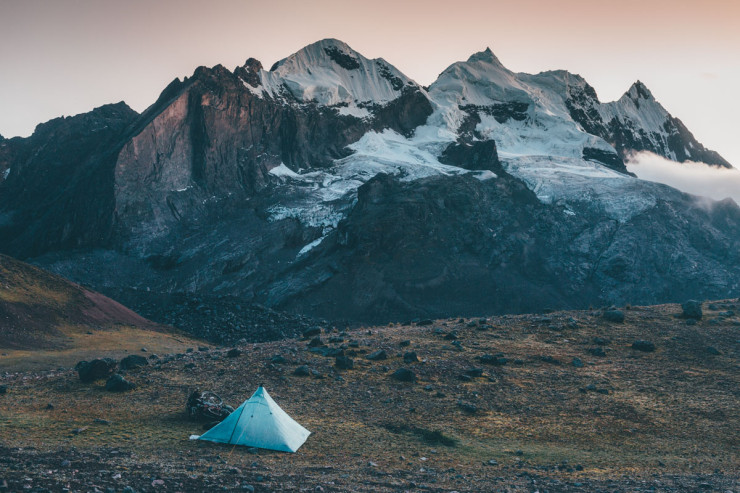

And after all these ordeals, the UltaMid 2 still looks brand new; there’s narry a single blemish to report! Which has played a convincing part in why, after much deliberation, I’ve finally accepted its stratospherically high price tag of $685 (excluding pole and pegs) and now consider it to be the best shelter I’ve ever tried. As for my camping history context, I’ve worked my way through the likes of dome tents (Big Agnes, Terra Nova, TNF), tunnel tents (Hilleberg and Vaude), single skin, enclosed models (Tarptent) and other cottage industry tarp manufacturers. Like most things in life, they all have their pros and cons. But for me, the UltaMid’s the one…
But let’s rewind first.
The UltaMid 2 is a minimal, single skin tent – or shelter, depending on what you like to call such designs – that comfortably sleeps two. Pyramid in style, it’s non-freestanding, relying on a taught setup for best performance. As such, it’s easiest and most satisfying to pitch on relatively soft ground, though in a pinch the use of rocks, bikes and shrubs to anchor stakes and guy points will certainly suffice. When I say minimal, that’s exactly what I mean. There’s no floor. Or netting. Just a single pole to brace the center of the ‘mid and a humble set of tent stakes, neither of which are provided. Inherent to a pyramid shelter, it offers excellent protection from the elements – be they wind, rain or snow – from whichever direction they’re barreling towards you, unlike some flat tarps.
In terms of construction, the Ultamid 2 is made from Cuben Fiber, or DCF8 Dyneema® Composite Fabrics, as it’s now officially called. Incredibly light yet also hardwearing, this ultra high-tech, non-woven fabric – its original name derives from the blend of its carbon and polymer filaments – was developed for the prestigious Americas Cup in the 90s and optimised for strong rip resistance and minimal weight. Dyneema is available in various grades and the UltaMid uses a midweight version that feels neither too skimpy nor too heavy. Given the fancy tech, it’s of little surprise that Dyneema is also extremely expensive. Its material cost is as much as double that of silnylon, the longstanding favourite it’s now usurped amongst the diehard ultralight fraternity.
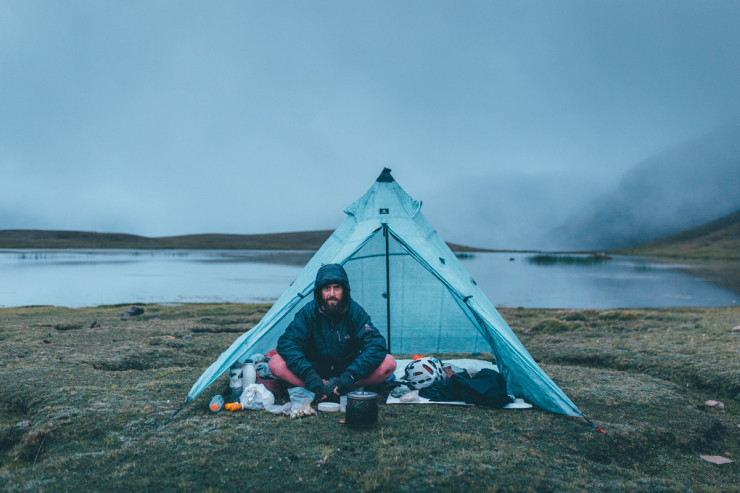
Pitching a pyramid-style shelter takes a few attempts to figure out and perfect; anyone brought up with traditional geodesic designs is likely to find it a touch fiddly at first. In time though, it’s an extremely quick and strangely satisfying process. This video from Hiking in Finland offers a good visual example of how it’s done.
Within, the UltaMid’s height can be easily adjusted depending on conditions – a higher pitch provides increased airflow and a larger internal space, while one positioned tight to the ground helps keeps drafts at bay. The telescopic pole – I used both a carbon model borrowed from my old Black Diamond Mega Light, and a lighter, custom made one from Ruta Locura – allows a variety of different placements. Running it in the middle splits living quarters into two neat roomy halves, with ample room for stashing gear. Placing it strategically to one side allows for 2.5; we family camped regularly for 7 weeks without feeling too cramped.
In fact when it comes to sizing, the UltaMid 2 is nigh on palatial, or at least very spacious for two and distinctly indulgent for one. Given the pyramid design, expect to sacrifice some usable space at the base of each panel; these cheese-shaped zones are best dedicated to storing gear. In exchange, headroom is unusually considerate, a real boon for taller folk at the end of a long day’s riding. Other tourers I met in South America were intrigued by its shape, likening it to a tipi, even though it’s a different geometrical shape entirely. But like a tipi, its upright proportions are easy to feel comfortable in; after camping in the UltaMid 2, conventional tents feel like cramped coffins in comparison. The caveat is that tall campers have to take care not to press the feet of their sleeping bags against the sidewalls, as condensation can often be an issue with single wall shelters. Also inherent to the pyramid design, there’s no porch to protect you while jumping into your tent. This means you’re subject to the vagaries of the seasons once you zip the UltaMid open, which is where bulkier dome or tunnel tents with porches score points over it.
As for pack size, the UltaMid was bulkier than I expected when I first received it. Over time it’s compressed smaller and smaller, to the point that I can now roll it up into a package that tucks snuggly into an Anything Cage HD. This initial bulkiness is due in part to the ‘cone’, a reinforced affair that accepts trekking poles, paddles, sticks or even skis, as well as its hardy build.
It’s this build quality that the UltaMid stands out, justifying its higher price compared to worthy competitors like Mountain Laurel Designs’ Duomid XL ($365 silnylon, $690 cuben) and Bear Paw Designs’s more economical – in terms of cuben shelters, at least – PyraTent 2 ($430). Unlike many ultralight tents, the UltaMid 2 doesn’t skimp in areas prone to longterm wear and tear. This can be seen in its large, waterproof two-way zipper and the way each of its center panel and parameter tie-outs are heavily reinforced. Seam sealing also comes as standard, as do lightweight but burly guy lines. In short, this is no fair weather shelter. I never felt anything but completely confident camping in it, no matter how much the wind was howling or the rain was lashing down, which is not always the case in ultralight setups.

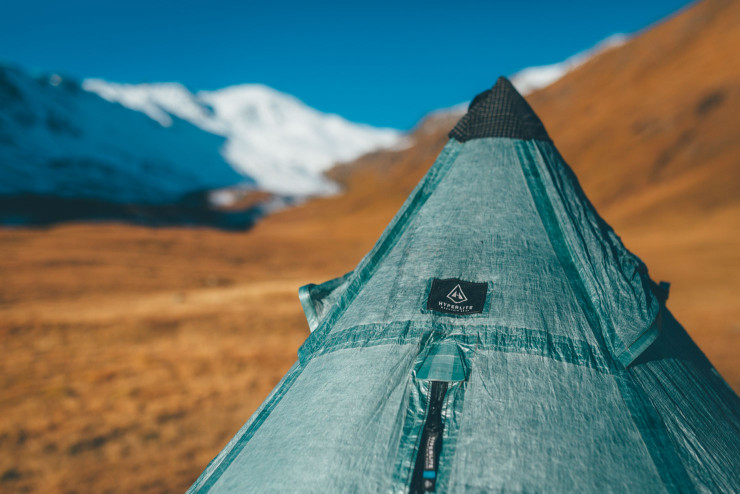
Concerning living with cuben fiber, I’d also point out a few welcome perks. For one, cuben doesn’t wet out and sag like silnylon; it dries more quickly in the morning and doesn’t require tensioning when ambient humidity changes. Cuben Fiber can also be easily repaired with standard issue Duct tape – not that I’ve needed to do so. On the flipside, the melting point is lower than that of silnylon, so indoor cooking inside isn’t officially recommended. With care, I managed just fine with my alcohol stove on a couple of occasions.
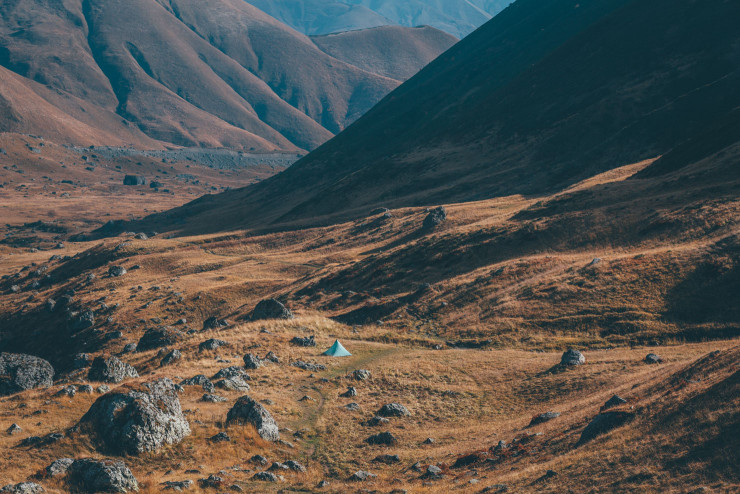
Like the majority of tarps and the way they pitch without a floor, there’s an al fresco feeling to the UltaMid 2. To those accustomed to the cocoon of their fully enclosed tents, it’s a notion can initially seem slightly bizarre. In fact, this resulting sense of ‘connection’ to terra firma has become one of my favourite aspects of tarplife – best experienced when pitching the UltaMid in a field of wild flowers! To protect my air mattress and keep dampness at bay, I carry a sheet of simple Tyvek, though Polycro or Cuben are lighter still. Unless pitched tight to the ground (height can be adjusted thanks to the telescopic pole), the UltaMid 2 tends to be a little breezy; a protective barricade of gear generally does the trick.
Such open-air living can create valid concerns amongst jungle and desert dwellers. On our family trip, we ran Hyperlite’s floorless mesh insert ($145/363g) to keep mosquitos at bay. There’s also a fully enclosed version that’s complete with a Cuben fiber, bathtub-style floor – I expect I’d sleep more peacefully zipped away from critters if heading to the deserts of southern Arizona, or more jungly locales. Such an accessory will, however, add an additional $375 to your bill – effectively the price of a tent in its own right – as well a further 595g to your setup. Even so, the sum of these parts is still significantly lighter than a conventional two skin tent rated for 4 season use. And don’t forget a modular pyramid design can offer the best of all worlds. By packing the parts relevant to the trip you’re on, you’ve effectively gained an emergency shelter for remote day rides, a minimal setup for solo tours, and the full monty for 2-person, long distance tours in the high mountains.
Modular weights
UltaMid 2: 501g
8 stakes: 80g
Tyvek groundsheet: 200g
Black Diamond telescopic carbon pole: 280g (see below for details)
Total: 1061g (37oz)
Total including Ultamid 2 Insert with DCF11 Floor: 1456g (40.4oz)
Adjustable poles
Given that bikepackers are unlikely to be carrying trekking poles to pitch the UltaMid 2, this review initially revolves around using a Black Diamond carbon telescopic pole with one segment removed – the one that came with my Black Diamond Ultra Light. The advantage of adjustable poles is that you can pitch your ‘mid high or low, as required: high encourages extra air flow while low provides a seal to the ground to keep out dust and high wind.
Since then, I’ve been using one of Ruta Locura’s excellent alternatives, in a .600 grade. It’s lighter, cheaper, can be specced with an adjustor pole, and can be cut to your required length at the time of ordering, so it will fit into your framebag. When purchasing a pole, bear this in mind: according to Hyperlite Mountain Gear, the optimal length is 64″ for their recommended ‘standard’ height when pitching the UltaMid 2 using the insert. This allows a few inches for air flow around the bottom of the shelter. Based around this sweet spot, choose an adjustable pole that can be positioned a couple of inches higher or lower to allow some pitching leeway, with or without the optional insert. A 60in Ruta Locura pole with adjustor offers a range between 60″ and 68″. I’ve taken mine across Peru, in heavy storms, and it was stood up really well.
- Weight 501g (17.67 oz)
- Pack Size 8.5x6x5.5” / 21.6×15.2x14cm
- Line dimensions Width: 83”/210.8cm, Length: 107”/271.8cm, Height: 64”/162.6cm
- Price $685 (excluding pole and stakes)
- Colors Spruce Green and White
- Contact/Buy Hyperlite Mountain Gear
Wrap Up
The UltaMid 2 is hands down the best tent I’ve yet to try. Not only is it a refreshingly fun shelter to camp in, it’s both versatile and light – especially given its generous headroom, cavernous living space, and the fact that it’s sturdy enough for genuine 4-season use, which is something that can’t often be said of ultralight shelters. Also worth noting is that at the ultralight end of the market, more conventional tent manufacturers often look at ways to save grams, often to the detriment of daily, long-term use. ‘Mid designs are inherently very simple, which allows them to be light and durable.
Of course, the UltaMid 2 is also hands down the most expensive tent I’ve spent time in. Whether it’s worth your dollars will revolve, to some extent, on whether you can physically afford its $685 price tag – especially given the strong competition from US-made silnylon ‘mids, as well as more affordable options made overseas.
But if your pockets run deep enough and the style of a ‘mid design appeals, then investing in the Ultamid 2 is money well spent. I can think of few situations where I’d rather use another tent and no other ultralight options that will offer so many years of service – only the zipper is likely to need replacing eventually.
On a personal level, my use of the Hyperlite over the last year has jived well with every one of my trips. Barebones, it’s been easily light enough to carry on solo tours, like the one I enjoyed across the Republic of Georgia. And shared with a companion – or even my family – across South America, it’s helped to significantly cut down on weight and bulk, especially compared to more conventional dome designs.
Do you have an UltaMid? Let us know where you’ve used it and if you like it as much as we do. Or tell us about other equivalents you’d recommend!
Please keep the conversation civil, constructive, and inclusive, or your comment will be removed.






